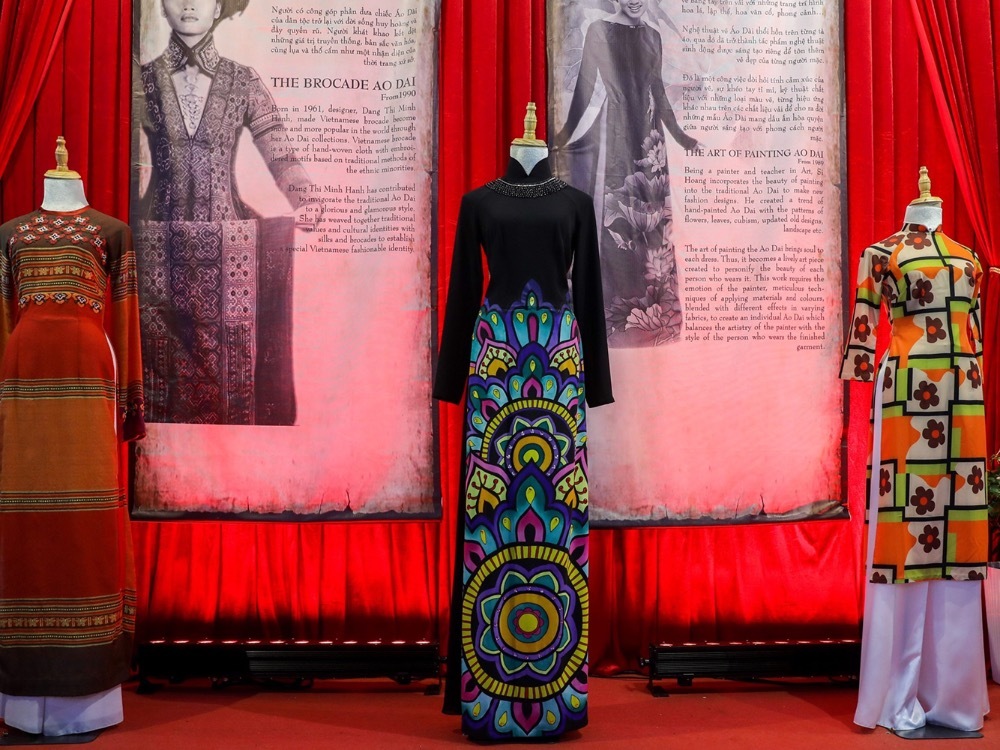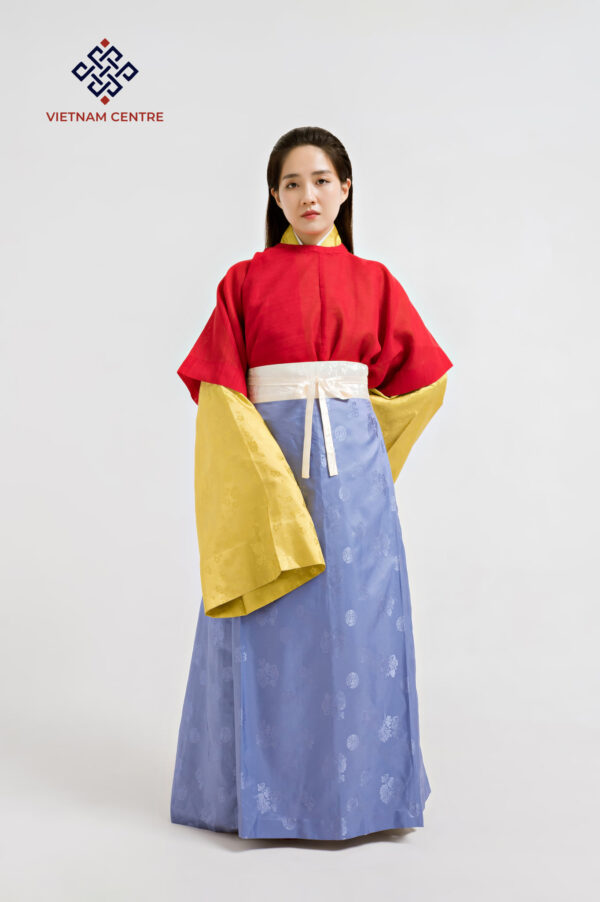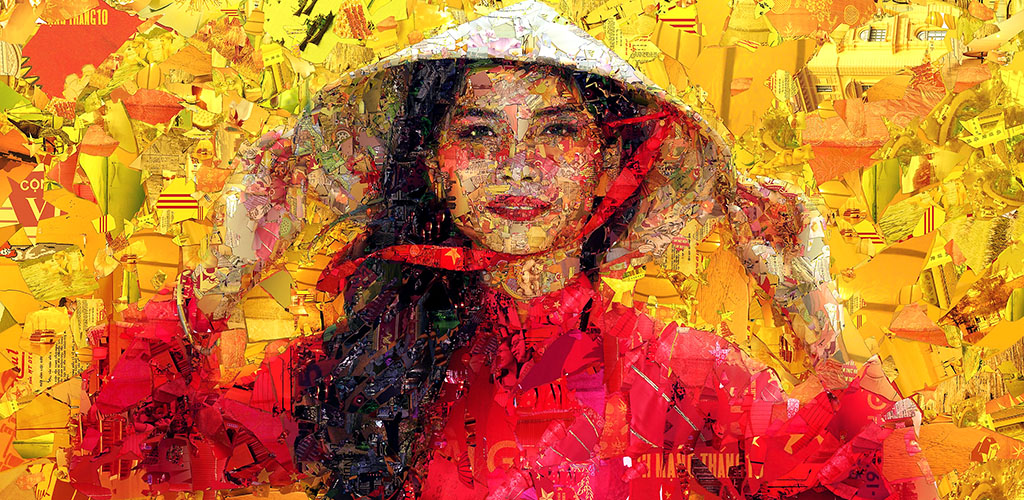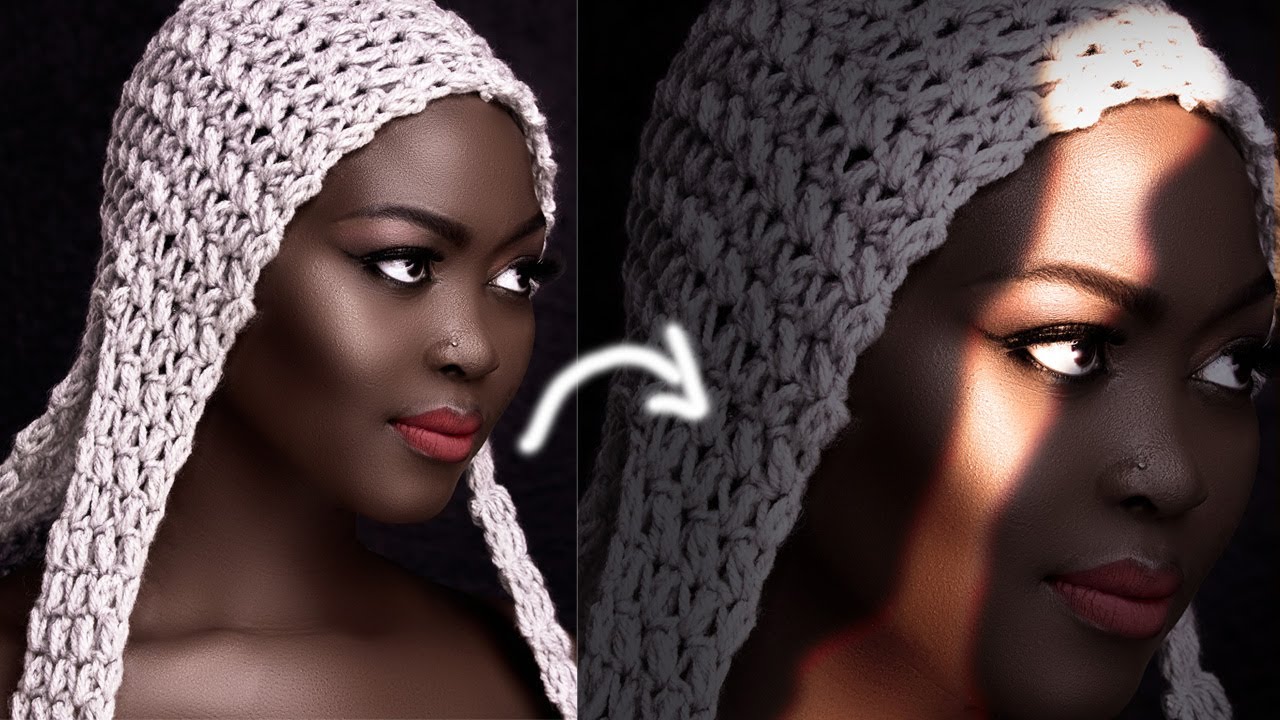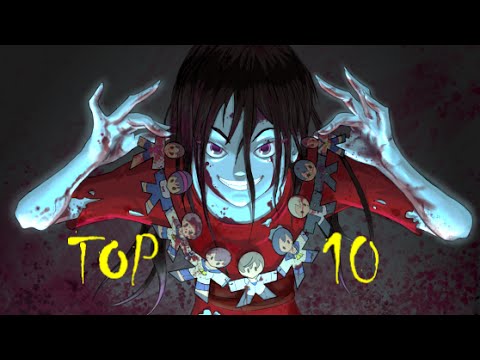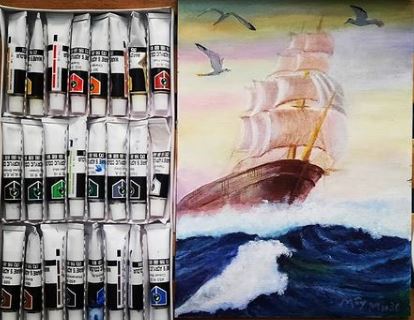Chinese Armor and Art. The discovery of wooden slips in Yinwan尹湾 Han (202-220) Tomb is the earliest record of the appearance of chinese horse armor—— 具装,and the armored cavaly pottery figurine was also found in other tomb.
However, the horse guards were already apeared since the warring states (475BC-221BC) and Qin dynasty (221BC-207BC). Fig. 1 shows restrord sketch of unearthed leather horse guard from Chu 楚 tomb in Bao moutain, Hubei and the stone horse armor from QinShiHung’s Mausoleum 秦始皇陵.
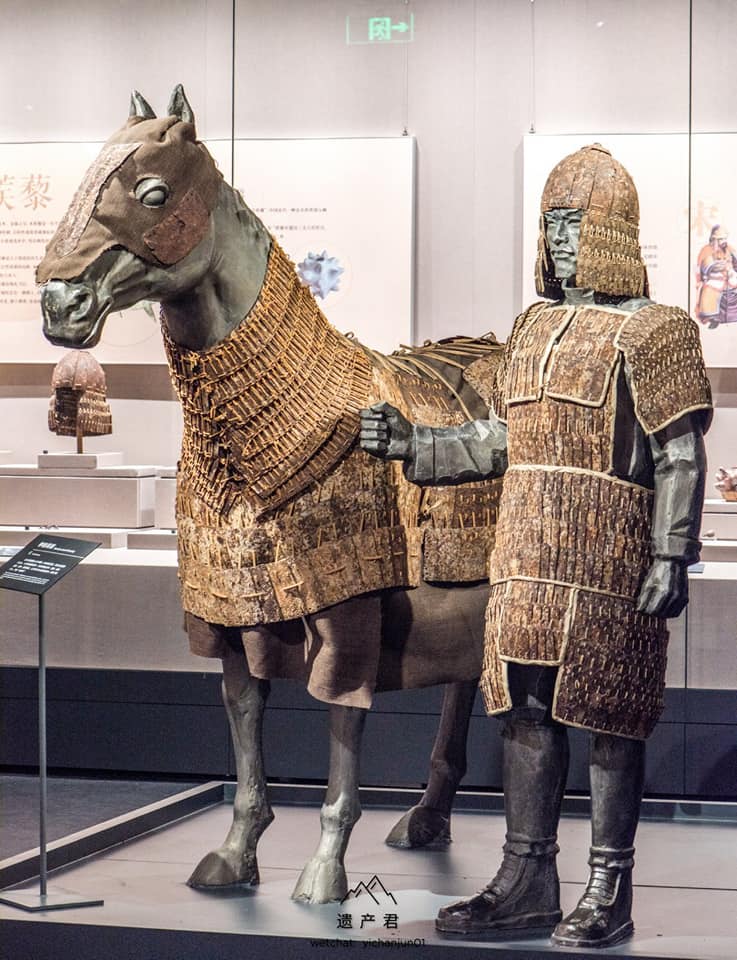
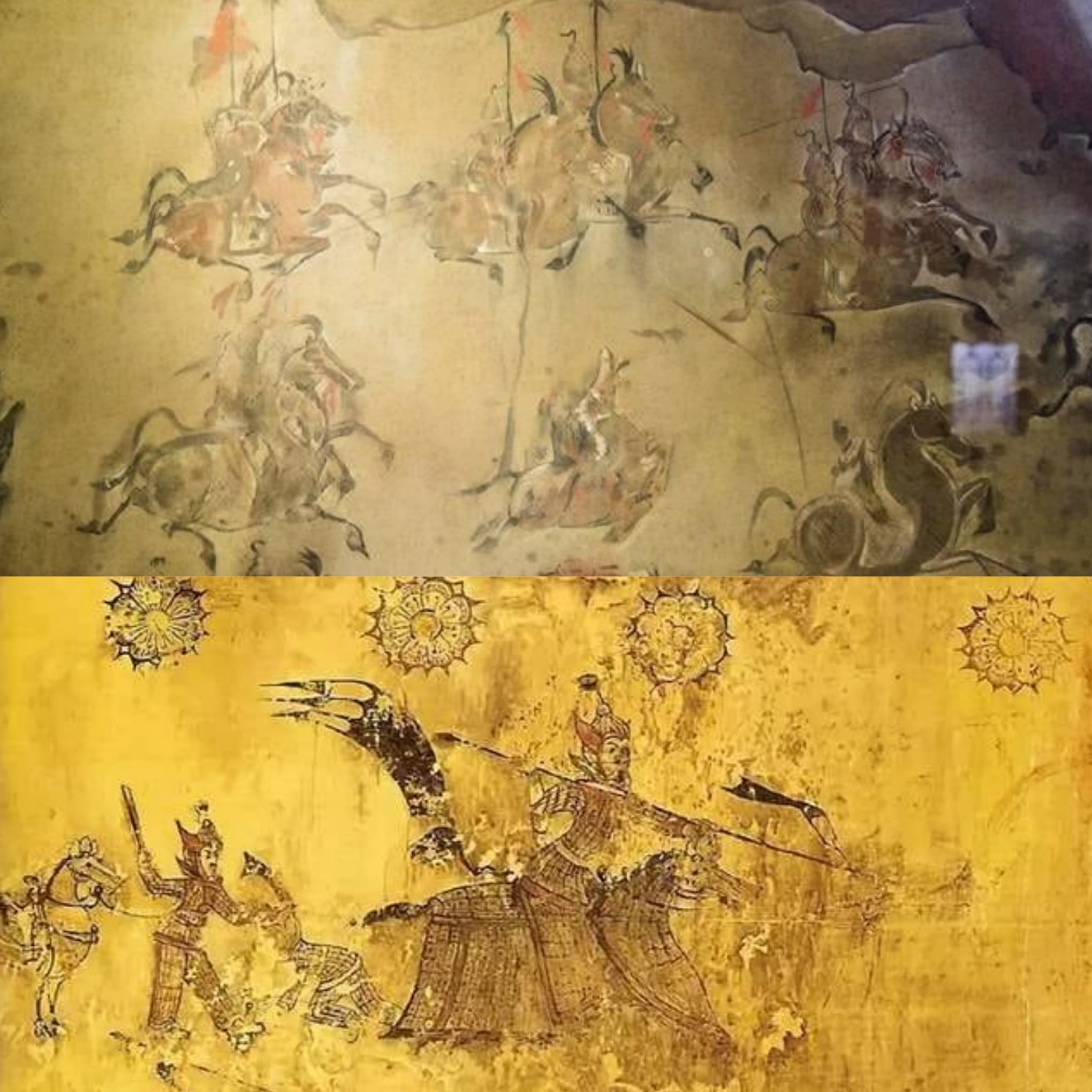
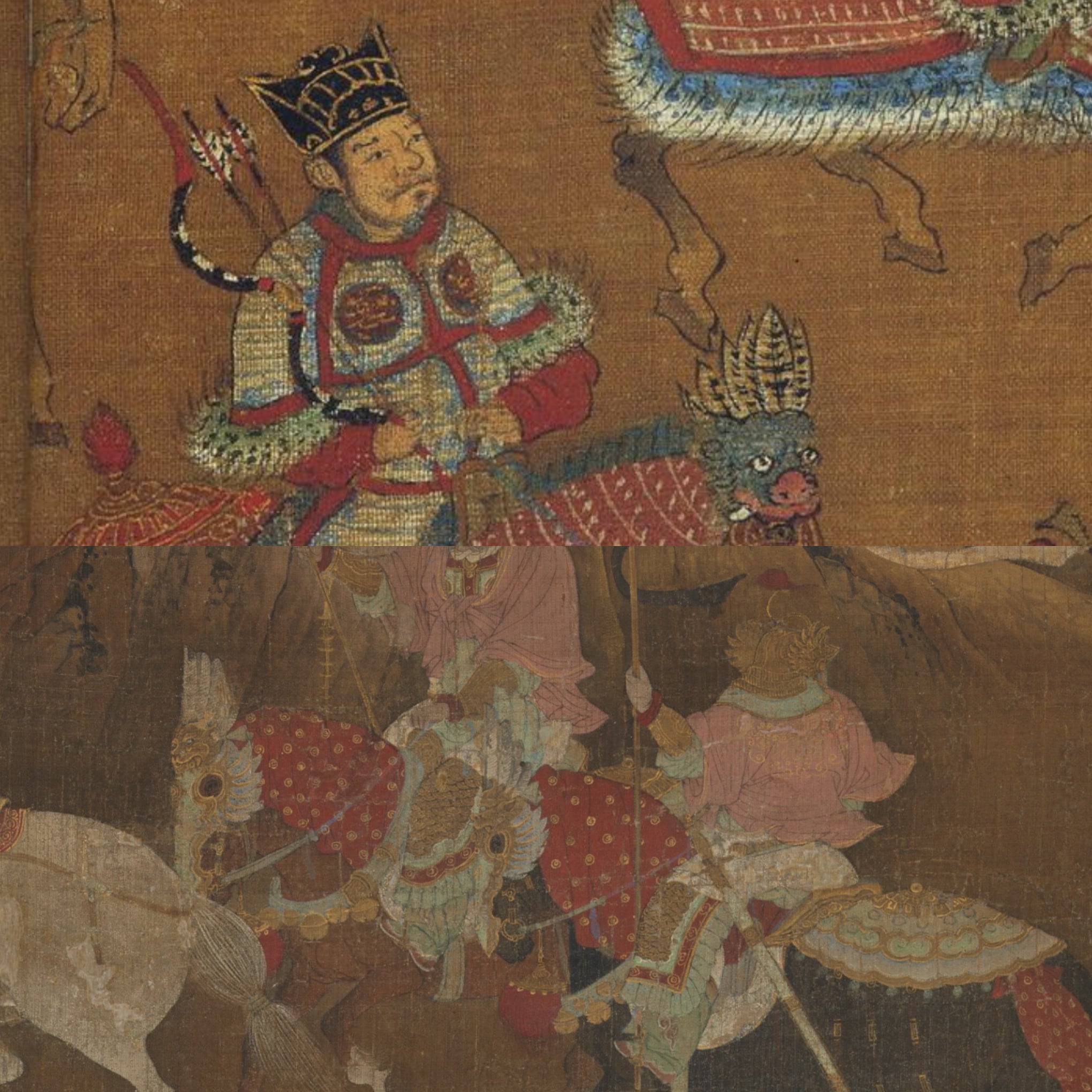
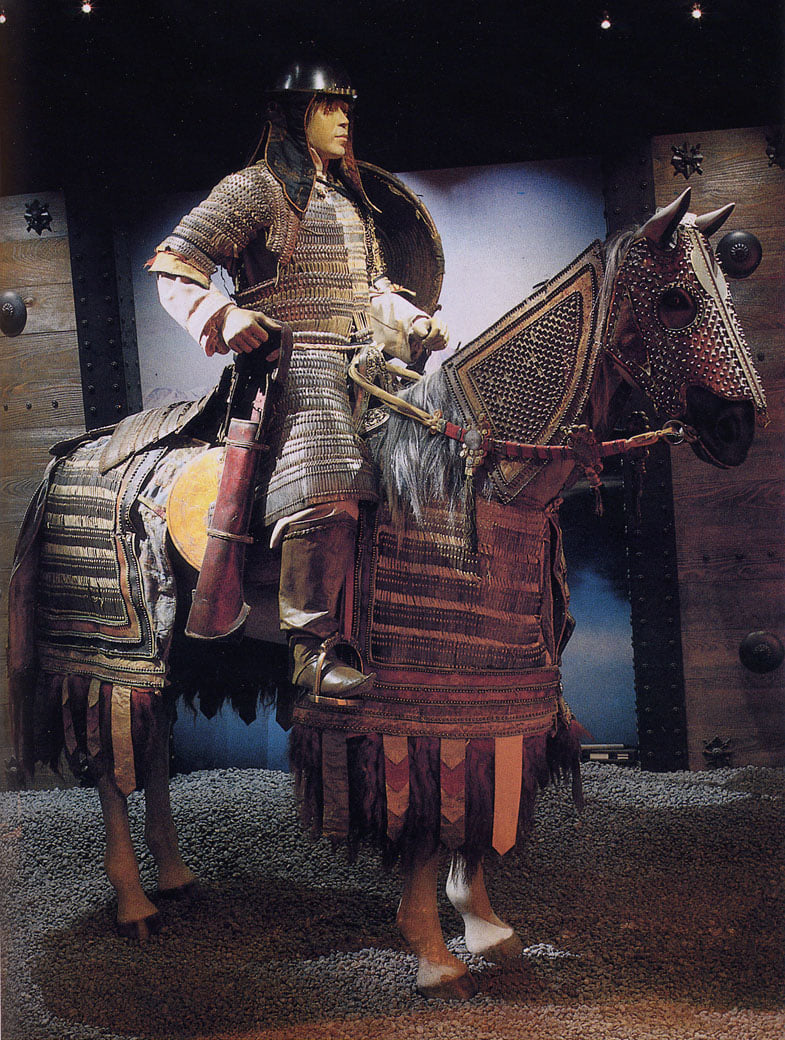
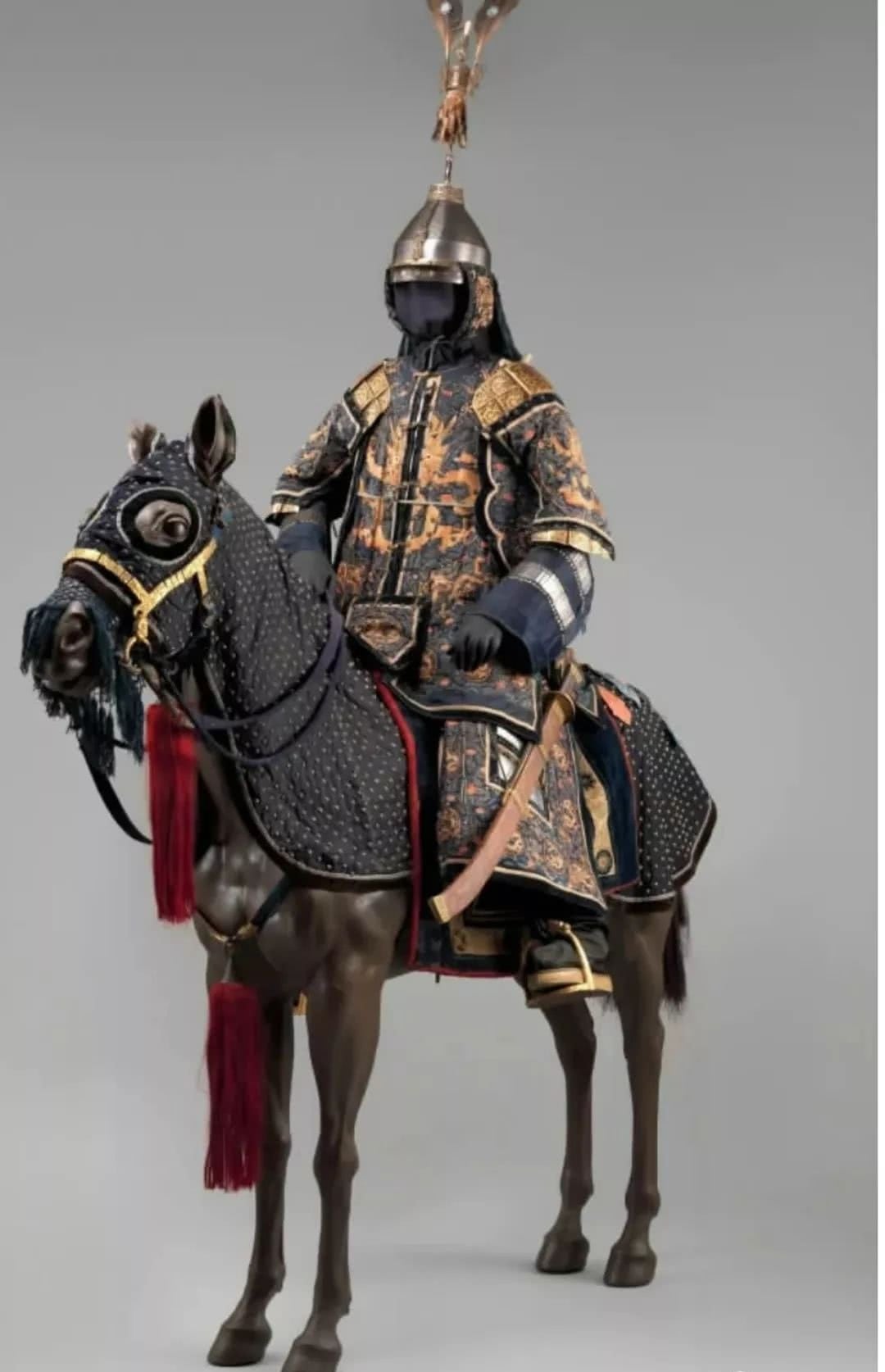
In the Wei, Jin, Southern and Northern Dynasties (220-589), especially the people of Sixteen states, who were good at riding and shooting, made this historical period an era of rapid development of ancient Chinese cavalry and armor (Fig. 2: Mural in Han tombs, Liaoyang, China; Fig. 1: Mural of Goguryeo 高句丽 tombs now in North Korea. The territory of Qianyan once extended to the Korean Peninsula).
The complete set of cavalry armor was a relatively advanced and perfect guards in the war at that time. But during the Sui and Tang Dynasties (581-907), the heavy cavalry, with both armored soldier and horses, was gradually replaced by light cavalry. The former gradually became a characteristic of the northern nomadic regime later, such as Khitan, Tangut, Jurchen (Fig. 4: Liao Khitan heavy cavalry armor).
Except the influence in Tibet (Fig. 5), the continuation of horse guards in later Central Plains were more like ceremonial warfare, such as the horse armor from Song (960-1279) painting “Da Jia Lu Bu” (Fig. 3: 大驾卤簿图, lit. imperial guards of honor) and “Emperor Xuanzong’s Flight to Shu”(Fig. 3: 玄宗/ 明皇幸蜀图) . And the truth is, even though there were so many paintings about heavy cavalries from Mongolian Yuan and other Khanate, but many unearthed horse guard from them were made of fabrics. Such similar forms still appeared until the Qing Dynasty (Fig. 6).
Fig. 1: More about Qin and Chu armor:
Fig. 3: painting “Da Jia Lu Bu” (大驾卤簿图, lit. imperial guards of honor): https://www.facebook.com/ChineseArmorArt/posts/194940785667941
Fig. 4: Liao (916 – 1125) Khitan heavy cavalry armor:
Fig. 5: More about tibetan armor:
CHECK OUT MY CHANNEL https://youtu.be/Rm_PnqW6Jws


